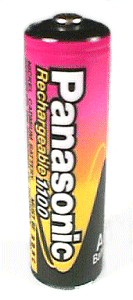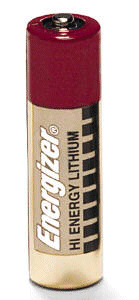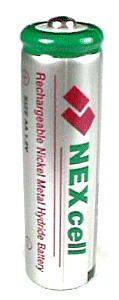| Batteries |
|
| Batteries |
|
|
|
|
|
|
Capacity |
|
Life |
home use: |
trail use: |
Remarks: | |||
|
|
0.10-0.50 |
|
(0.55oz) |
|
A cheap battery. Not readily available anymore in the USA, but still common in other countries. |
|
||||
|
|
|
|
(0.82oz) |
|
Okay for the trail, but really over-rated for general use. |
|
||||
|
|
|
|
(0.48oz) |
|
An ideal battery for the trail: the lightest; the longest lasting, but: the most expensive! |
|
||||
|
Nickel/Cadmium |
|
|
(0.72oz) |
|
The cadmium makes this an environmental enemy. Small capacity maybe okay for the TV remote control, but useless in a flashlight. |
Nickel/Cadmium |
||||
|
Nickel/Cadmium (Panasonic) |
|
|
(0.76oz) |
|
If a Nickel Cadmium then this one! |
Nickel/Cadmium (Panasonic) |
||||
|
Nickel/Metal Hydride |
|
|
(0.89oz) |
|
Per kW of power the cheapest! Approximately $4.00 per kW — compared with $200.00 for an alkaline battery. Unfortunately the heaviest amongst the AA's. Combine it with a small solar charger for the trail ? |
Nickel/Metal Hydride |
||||
|
|
   |
|||||||||
|
Lithium 3V |
|
16.6g (0.59oz) |
||||||||
|
AAA Alkaline |
|
11.1g (0.39oz) |
||||||||
|
AAA Alkaline |
|
11.7g (0.41oz) |
||||||||
|
|
|
0.15g (0.005oz) |
||||||||
|
|
||||||||||
This data is given in good faith and it is NOT 100% accurate. If you have different information, or additional information we will be glad to correct / amend the figures as required. (feedback)
Note on alkalines: The alkaline battery has a high capacity, and does well on low drain applications, but on high drain applications, the internal resistance becomes a killer, and the life expectancy reduces. The newer alkalines supposed to have this problem fixed to some degree.
Click here to go back to top of this page.
TERMS OF USE
Copyright ©1998-2003, FJORDLAND Entertainment
All rights reserved
Last updated: 4 September 2003